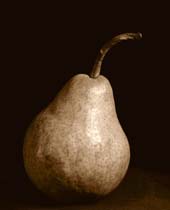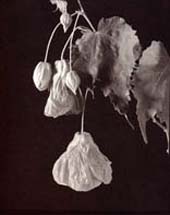-
October 5, 2024
9:30 am - 4:30 pm
SALT & ALBUMEN PRINTING: the two processes are closely aliened not only in the history of photography but in the practice of creating these two most beautiful processes.
ABOUT THE SALT PRINT:
This is a simple process with a number of challenges to master. Salt prints are created by coating paper in a solution of sodium chloride (common salt) followed by a silver nitrate solution to create silver chloride. Exposing to UV light changes the silver chloride to image making metallic silver. Salt prints have a matte surface with wonderful tones ranging from warm to cool browns.
THE SALT PRINT HISTORY
William Henry Fox Talbot, known as the “father” of photography, discovered the salt print process in 1834 but it not announced until 1839. Talbot’s early discoveries were the foundation of numerous photographic and print processes that are practiced today.
ABOUT THE ALBUMEN PRINT:

Ellie Young
Albumen is a salted paper print with an albumen binder. Albumen from egg whites holding the photographic chemicals to the paper. Cotton paper is first coated with a salted albumen solution, followed by a silver nitrate solution to form light-sensitive paper. Exposure to light changes the silver chloride to image forming metallic silver. Albumen prints have a semi-gloss to high-gloss surface depending on the coating/s. Developed in 1850 by Louis Desire Blanquart- Evrard, albumen became the dominant form of photographic printing from 1855 to the turn of the 20th century.
The 19th-century french photographer Eugène Atget (1857–1927) printed most of his work of the streets of old Paris in albumen.
Albumen prints are contact prints, the negative is the same size as the image.
Ref: James Reilly, The Albumen and Salted Paper Book 1840-1895. Light Impressions, 1980.
ABOUT THE WORKSHOP:
This is a hands on workshop where the participants will produce a number of photographs throughout the day. Outline of the day:
1. The negative (includes instructions on creating digital negatives)
2. Paper choices
3. Coating methods
4. Exposure
5. Processing – (includes toning)
All materials including lunch is provided –
NB: Class starts at 8.30 am and concludes at 5.30 pm
CLASS MAXIMUM 2
ABOUT ELLIE YOUNG
Ellie has been practicing and studying the art craft and science, of ‘alternative’ photographic processes since 1994. More information click professional instructors
WHAT TO BRING
Negatives and material for photograms:
An apron or lab coat or old comfortable clothing other materials including lunch is supplied, – wear old comfortable clothing

